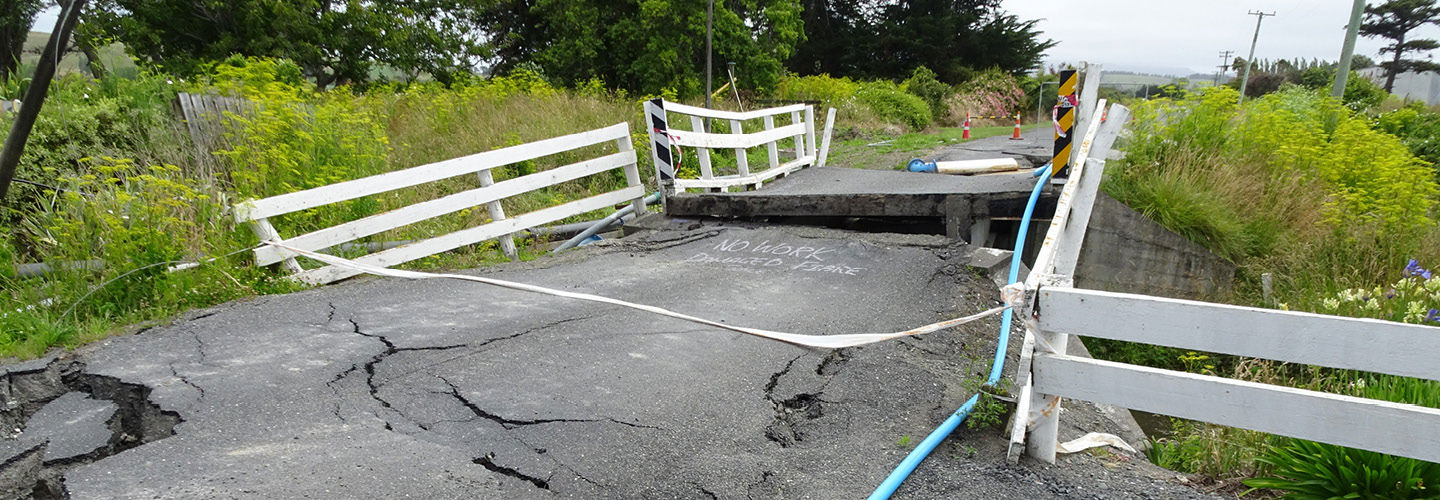All of New Zealand is at risk of earthquakes. Each year, more than 15,000 earthquakes are recorded in New Zealand, but only around 100 - 150 are strong enough to be felt.
Earthquakes can trigger other hazards, like landslides, avalanches, flash floods from dam bursts, fires and tsunami.
While we can’t predict when an earthquake will happen, you can reduce your risk by knowing what to do before, during and after an earthquake.
Get ready for earthquakes
There are simple steps that you, your family and workplace can do to be prepared for earthquakes.
Here are four easy things you can do to get ready:
- Move heavy items and books to lower shelves.
- Get hooks for your art and pictures (single nails won’t stay secure).
- Stick fragile objects to surfaces.
- Identify places in each room to drop, cover, hold.
Prepare your home and workplace to minimise injury and damage.
- Make an Emergency Plan with your household.
- Assemble and maintain your emergency supplies for your home and workplace, as well as a grab bag.
- Practice drop, cover, hold around your home and workplace, such as under a sturdy table.
- Check your household and contents insurance policy to see if you have adequate cover.
- There are easy ways you can quake-safe your home – such as fastening and reordering shelves.
- Have a qualified builder look at your foundations and ensure any renovations comply with the current New Zealand Building Code.
- Drop to the floor, cover your head and neck under a sturdy table (if there is no shelter nearby, cover your head and neck with your arms and hands), hold on until the shaking stops.
- Stay indoors until the shaking stops and you are sure it is safe to exit. Do not run outside as you may be hit by bricks and glass. You are safer inside under a table.
- If you are outside, move no more than a few steps away from buildings, trees, streetlights and power lines, then drop, cover and hold. Next to a car is better than nothing.
- If you are near the coast, remember, Long or Strong, Get Gone. Drop, cover and hold until shaking stops then move to higher ground immediately in case a tsunami follows the quake.
- If you are driving, pull over to a clear location, stop and stay there with your seatbelt fastened until the shaking stops. Once the shaking stops, proceed with caution and avoid bridges or ramps that might have been damaged.
- If you are in a mountainous area or near slopes or cliffs, be alert for falling debris and landslides.
If you are unable to Drop, Cover and Hold
- Get as low as possible and move away from windows or other items that can fall on you.
- If you use a wheelchair, lock your wheels and remain seated until the shaking stops. If possible, cover your head and neck.
- People who are blind or vision impaired; move with caution after an earthquake, furniture and items may have fallen.
- Be ready to drop, cover, hold for any aftershocks.
- Check yourself for injuries and get first aid if necessary. Help others if you can.
- Listen to local radio stations for official advice.
- Be aware that electricity supply could be cut, and fire alarms and sprinkler systems can go off in buildings during an earthquake even if there is no fire.
- Check for small fires and extinguish them if safe to do so. Call 111 for major fires, damage or injury.
- If you are in a damaged building, wait for advice from emergency wardens. If no one is around, try to get outside and find a safe, open place.
- Use the stairs, not the elevators.
- Watch out for fallen power lines or broken gas lines, and stay out of damaged areas.
- Use social media or text messages instead of calling to keep phone lines clear for emergency calls. Shorter text messages are more likely to get through.
- Keep your animals under your direct control as they can become disorientated. Take measures to protect your animals from hazards, and to protect other people from your animals.
- If your property is damaged, take notes and photographs for insurance purposes. If you rent your property, contact your landlord and your contents insurance company as soon as possible.
Earthquake activity in Taranaki
While Taranaki normally is not known for strong earthquakes, there are several active fault lines on- and off-shore, particularly in the Inglewood, Waverley and Oaonui areas.
Around 200 - 300 earthquakes are recorded each year in Taranaki, which accounts for about 2% of the typical number of earthquakes located in New Zealand annually. In Taranaki, up to ten of those might be large enough to be felt by residents.
Most of the shallow earthquakes in Taranaki are centered west of Mt Taranaki (Cape Egmont Fault Zone), with only a few events beneath or close to Taranaki Mounga.
Deep earthquakes are mainly located in the Hāwera area, caused by the bottom of the Pacific Plate subducting beneath the North Island. In the east of Taranaki, a band of activity continues almost to Mt Ruapehu.

